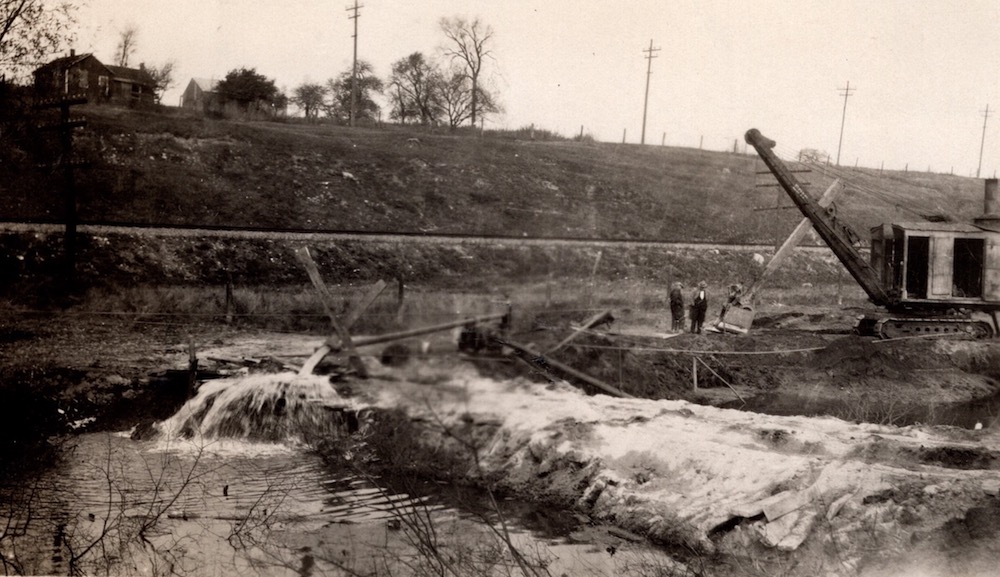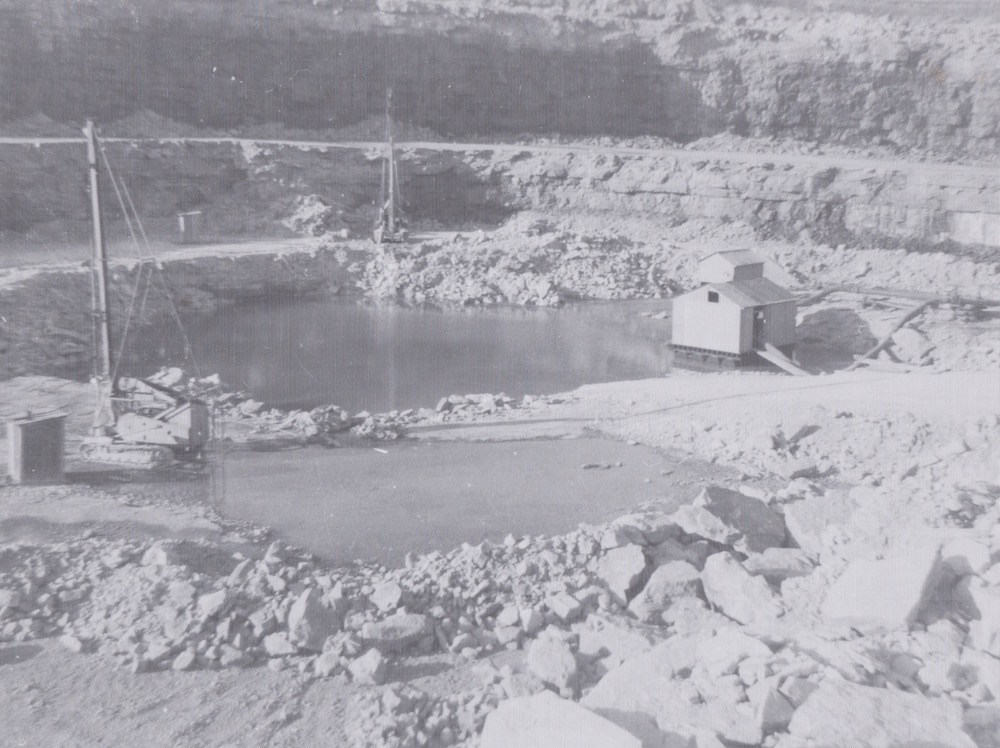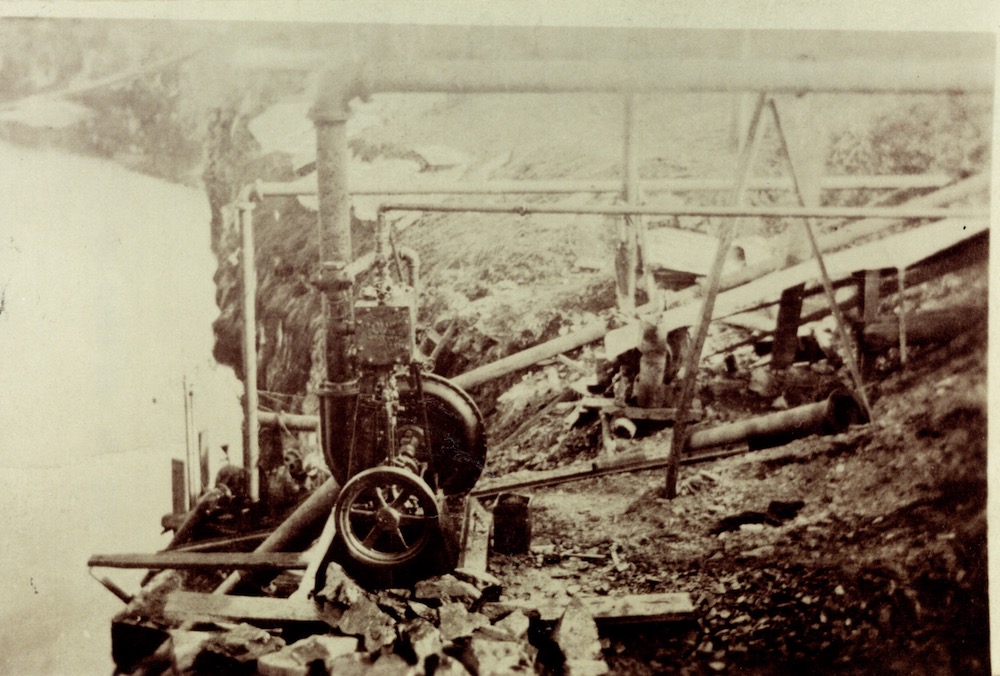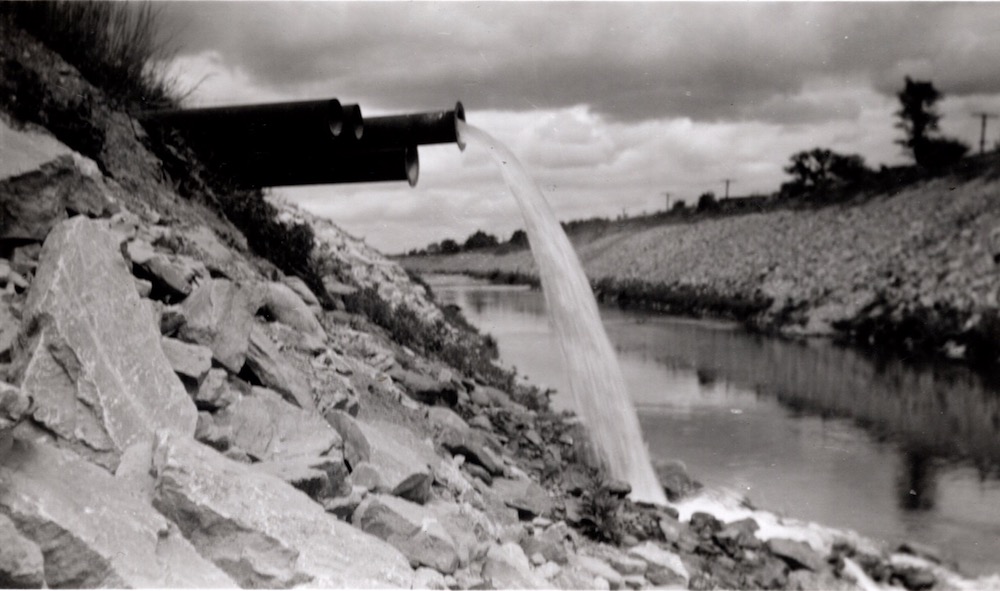Flooded Pits and Water Management
Operating alongside the Thames River and digging ever deeper into the earth, managers of Beachville’s quarries had to develop methods for controlling water. As advanced equipment made it possible to dig deeper, workers encountered groundwater reserves and struggled to keep their pits dry. Waterwheels were built to run off the flowing river. These were connected to pumps that drew water out of the pits so that mining operations could continue.
By the 1850s, water-powered pumps were replaced by gasoline pumps for draining holes. Pumphouses on quarry pit floors were set up and instrumental in directing water up the side of the rock face to other pumps on the pit’s edge. The images below show examples of a pumphouse, a secondary pump perched on the edge of a quarry wall, and a drainpipe leading to the Thames River.
Even with these complex water management systems in place, pumps were overwhelmed by heavy rainfall and charging rivers presented threats. In 1889, the Thames River flooded Beachville’s quarries, making accessing stone difficult later in the season. This flood only foreshadowed later events.
Today’s quarries feature internal channels, culverts, sumps, and pumps that convey water to settling ponds and discharging waterways. They use channels to drain water from their operations into creeks that still empty into the nearby Thames River. All water discharged into the river must be monitored to ensure the waterway is not flooded or eroded and that the effluent sent from the site is not toxic to public health or species inhabiting the river.





